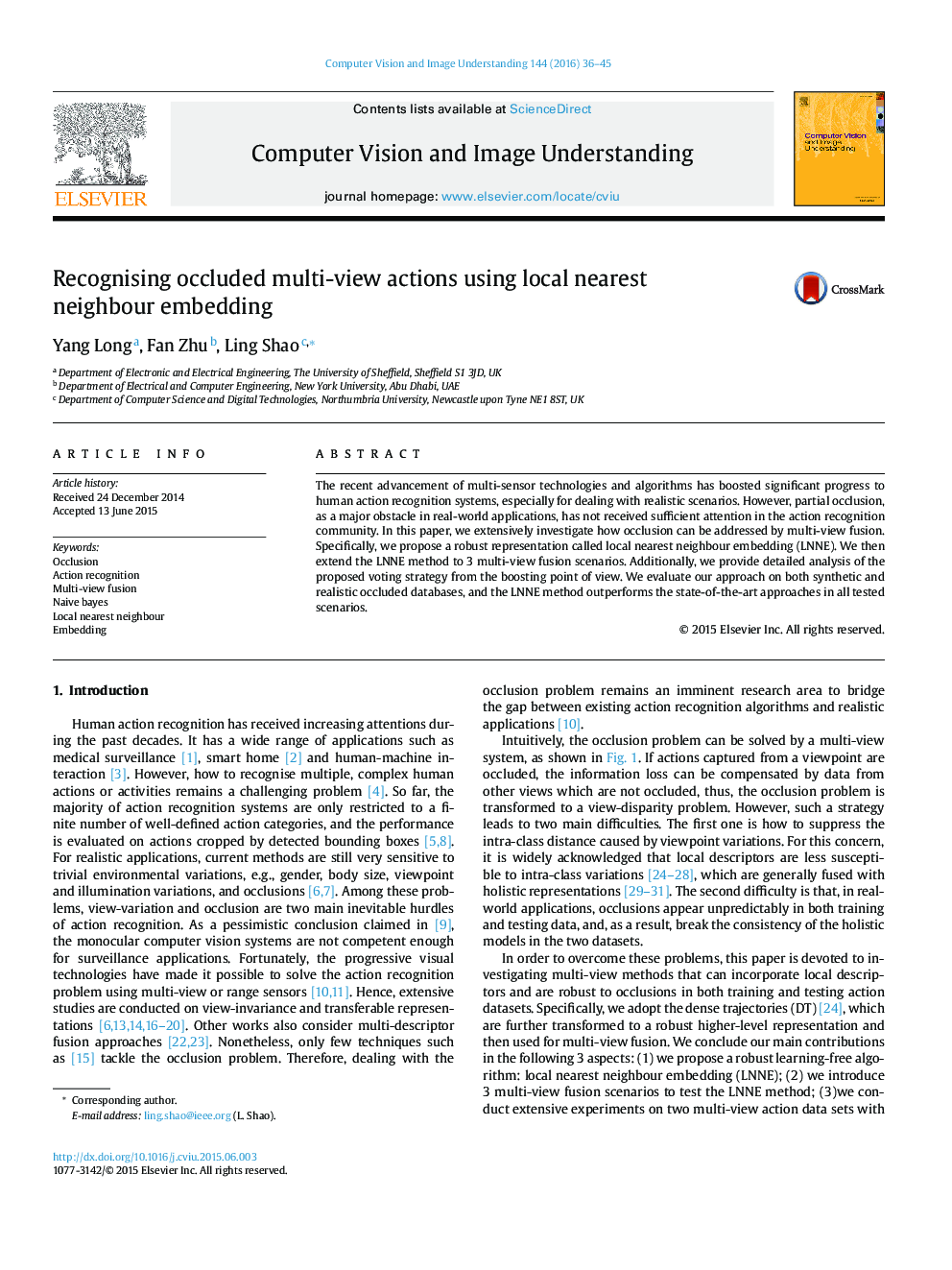| Article ID | Journal | Published Year | Pages | File Type |
|---|---|---|---|---|
| 6937649 | Computer Vision and Image Understanding | 2016 | 10 Pages |
Abstract
The recent advancement of multi-sensor technologies and algorithms has boosted significant progress to human action recognition systems, especially for dealing with realistic scenarios. However, partial occlusion, as a major obstacle in real-world applications, has not received sufficient attention in the action recognition community. In this paper, we extensively investigate how occlusion can be addressed by multi-view fusion. Specifically, we propose a robust representation called local nearest neighbour embedding (LNNE). We then extend the LNNE method to 3 multi-view fusion scenarios. Additionally, we provide detailed analysis of the proposed voting strategy from the boosting point of view. We evaluate our approach on both synthetic and realistic occluded databases, and the LNNE method outperforms the state-of-the-art approaches in all tested scenarios.
Related Topics
Physical Sciences and Engineering
Computer Science
Computer Vision and Pattern Recognition
Authors
Yang Long, Fan Zhu, Ling Shao,
